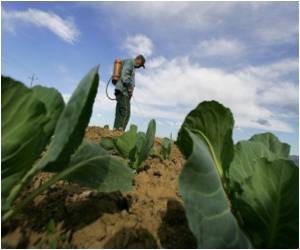Increased levels of carbon dioxide and nitrogen in the environment in the wake of increased food production could be stemmed by more efficient use of nitrogen fertilizers.

Producing that amount of food could significantly increase levels of carbon dioxide and nitrogen in the environment and cause the extinction of numerous species. But this can be avoided, the paper shows, if the high-yielding technologies of rich nations are adapted to work in poor nations, and if all nations use nitrogen fertilizers more efficiently.
“Agriculture’s greenhouse gas emissions could double by 2050 if current trends in global food production continue,” Tilman said. “Global agriculture already accounts for a third of all greenhouse gas emissions.” Much of these emissions come from land clearing, which also threatens species with extinction.
The article shows that if poor nations continue current practices, they will clear a land area larger than the United States (two and a half billion acres) by 2050. But if richer nations help poorer nations improve yields to achievable levels, that could be reduced to half a billion acres.
The research, published Nov. 21 online by the Proceedings of the National Academy of Sciences, shows that adopting nitrogen-efficient “intensive” farming can meet future global food demand with much lower environmental impacts than the “extensive” farming practiced by many poor nations, which clear land to produce more food. The potential benefits are great. In 2005, crop yields for the wealthiest nations were more than 300 percent higher than yields for the poorest nations.
“Strategically intensifying crop production in developing and least-developed nations would reduce the overall environmental harm caused by food production, as well as provide a more equitable food supply across the globe,” said Hill.
Advertisement
The environmental impacts of meeting demand depend on how global agriculture expands. Clearing land for agriculture and the use of fuel and fertilizers to grow crops increases carbon and nitrogen in the environment and causes species extinctions.
Advertisement
“Our analyses show that we can save most of the Earth’s remaining ecosystems by helping the poorer nations of the world feed themselves,” Tilman said.
Source-Medindia









